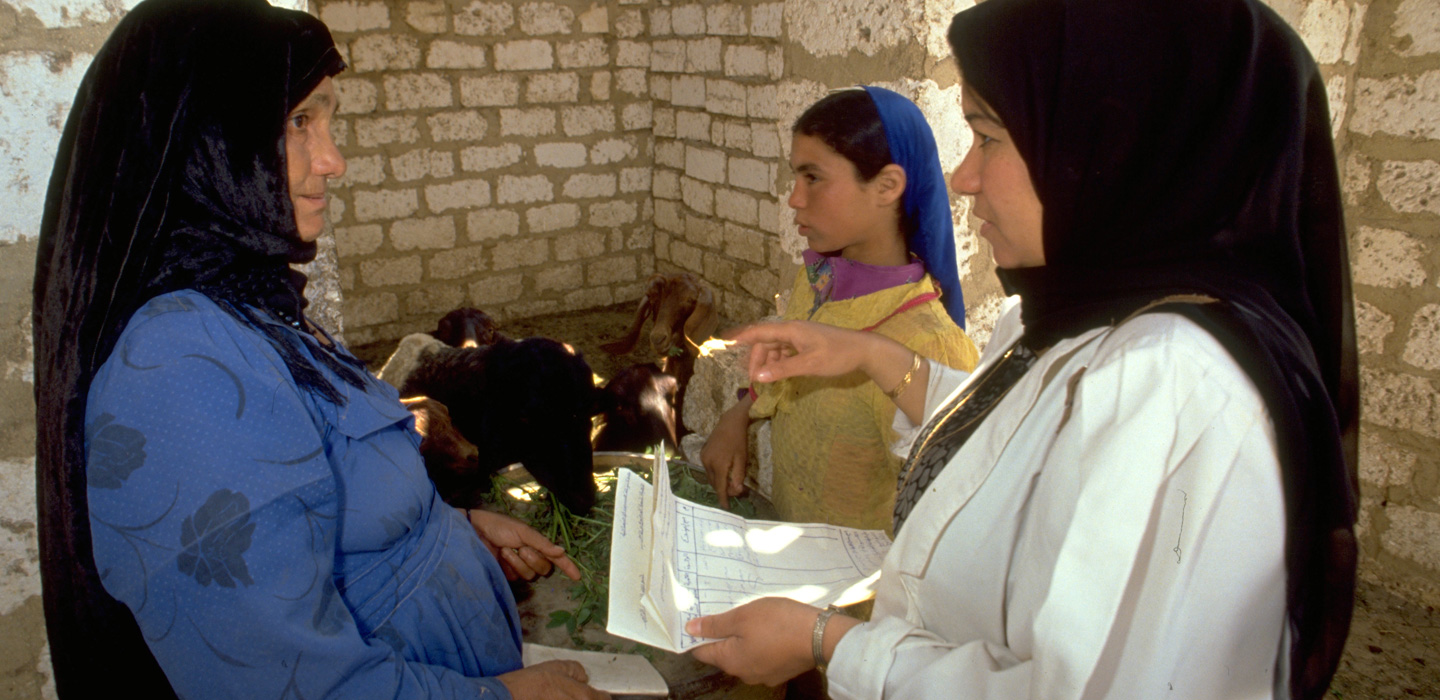Results-based financing: A potential game-changer for IFAD's future operations
IFAD Asset Request Portlet
Asset Publisher
Results-based financing: A potential game-changer for IFAD's future operations
Estimated reading time: 4 minutes
IFAD is always exploring new lending instruments to increase the number of potential financial solutions it can offer. To that end, IFAD has committed to developing and piloting results-based lending in its operations. This approach has the potential to be a game-changer in how IFAD delivers development outcomes for small-scale producers around the world.
What is results-based financing?
Results-based lending, which is a subset of results-based financing (RBF), is a financing approach that links funding with measurable, pre-agreed results or outcomes. Under this approach, the release of each tranche of funding is tied to meeting pre-established targets, giving implementing agencies an incentive to meet goals and the flexibility to achieve desired results while also reducing supervision costs for the payer.
In recent years, the practice has become increasingly common among donors, financial institutions, and governments as a way to deliver impact and ensure value for money. During the past decade, the total amount of development finance tied to results has increased substantially, from just a few billion dollars to at least 25 billion dollars.
Most of the development projects funded through RBF to date have been in the health and education sectors. When well designed, RBF can substantially improve results in these areas. For instance, the use of RBF in a maternal health program in Rwanda increased institutional deliveries by 23 per cent and preventative visits among children ages 2−5 by 133 per cent compared to the use of traditional input-based funding.
In agricultural development, RBF has been used to accelerate the research and development of improved products and practices, agricultural extension services, and infrastructure. Here too, RBF interventions have the potential to be more effective than traditional funding in some contexts – for example, by including and motivating the private sector to innovate and deliver cost-effective solutions. However, only a very small number of agriculture projects – less than 1 per cent – have been funded using RBF.
Recent evidence confirms that economic growth in the agriculture sector is two to three times more effective at reducing extreme poverty and food insecurity than an equivalent amount of growth generated outside agriculture. Therefore, the use of RBF represents a unique opportunity for IFAD, the only international financial institution focusing on agriculture and rural development, to contribute to achieving SDG 1 (no poverty) and SDG 2 (no hunger).
The opportunities and challenges of RBF in agriculture
Recently, IFAD’s Latin America and the Caribbean and Research and Impact Assessment divisions co-organized a webinar on RBF in conjunction with Instiglio, a not-for-profit consulting firm focused on the development community. The presentation highlighted that targeting RBF interventions in agriculture to the specific needs of the target group is critical to ensuring its success. Meanwhile, funding challenges can be met by crowding in capital from different stakeholders, including the private sector. One example of this is the first Poverty Alleviation Outcomes Fund launched in Africa. Having raised US$5.32 million from different stakeholders, it transformed the lives of more than 12,000 households in rural Kenya and Uganda by creating more than 4,000 sustainable microenterprises, including support for improved agricultural practices, in less than four years.
Using RBF would present IFAD with a number of opportunities along these lines. In terms of research, RBF provides a unique opportunity for IFAD to address a number of “what works” questions as we design and evaluate the most cost-effective approaches for our clients, the small-scale producers. In terms of policy, RBF becomes a suitable solution for IFAD in contexts where engaging countries demand more sophisticated designs, better and more transparent targeting mechanisms, and impact-oriented projects.
However, the use of the RBF structure – which requires that the financing institution disburses the agreed amount only once each pre-established target is achieved – creates a number of challenges, all of which must be carefully taken into account during the project design stage.
First, it is crucial to build in precautionary measures to manage risks associated with extreme events (e.g. weather or other natural hazards), especially in highly vulnerable regions – a necessity that has also been identified in IFAD’s Impact Assessments. It is thus advisable to create several different sets of pre-established targets reflecting different scenarios on the ground.
Second, comprehensive monitoring and evaluation systems should be put in place for these requirements. Measuring development outcomes and impacts accurately is a complex task that requires technical and financial resources, as well as contingency plans to account for potentially asymmetric information. When using RBF, targets and indicators to measure them need to be simple, measurable, and verifiable. IFAD is already working to further strengthen these systems, and RBF could provide another learning opportunity for IFAD in this regard.
Third, incentive structures are needed that will attract both small and large investors to finance RBF projects up-front. Agricultural projects may take several years to show full results, and projects financed via RBF may therefore potentially require a longer duration for the pre-agreed targets to be met and for the funding to be fully disbursed. However, this may result in investors’ capital being held up for an unusually long time. Outcome payers (such as IFAD or other international finance organizations) should, therefore, consider paying in tranches for short-term and medium-term targets realized through these projects.
And finally, it is important to recognize that not all projects can be financed with RBF. Using RBF requires setting up focused and realistic targets ex ante as an enabling factor for success, and this structure is not amenable to all projects.
RBF as a potential game-changer for IFAD’s future operations
For IFAD, future opportunities lie in the application of RBF to new and existing outcomes funds and blended financing programs in a way that can ensure better measurement of projects’ results while improving their efficiency. Thus, RBF could provide an opportunity to rebalance the focus on project performance from input-based to results-based measures, where circumstances permit. Country teams would need to work more closely with implementation units in order to prompt innovation and secure measurable results that will allow for the projects’ continuation.
Such an effort is already under way: IFAD is currently piloting its first-ever RBF in Cuba’s PRODECAFE project, approved in September 2019, an effort to support the country’s coffee and cocoa value chains by transforming agroforestry cooperatives into modern enterprises. Several other IFAD-supported projects still in the pipeline are designed to use RBF as well. All of them are steps in the right direction.
Publication date: 29 September 2020
